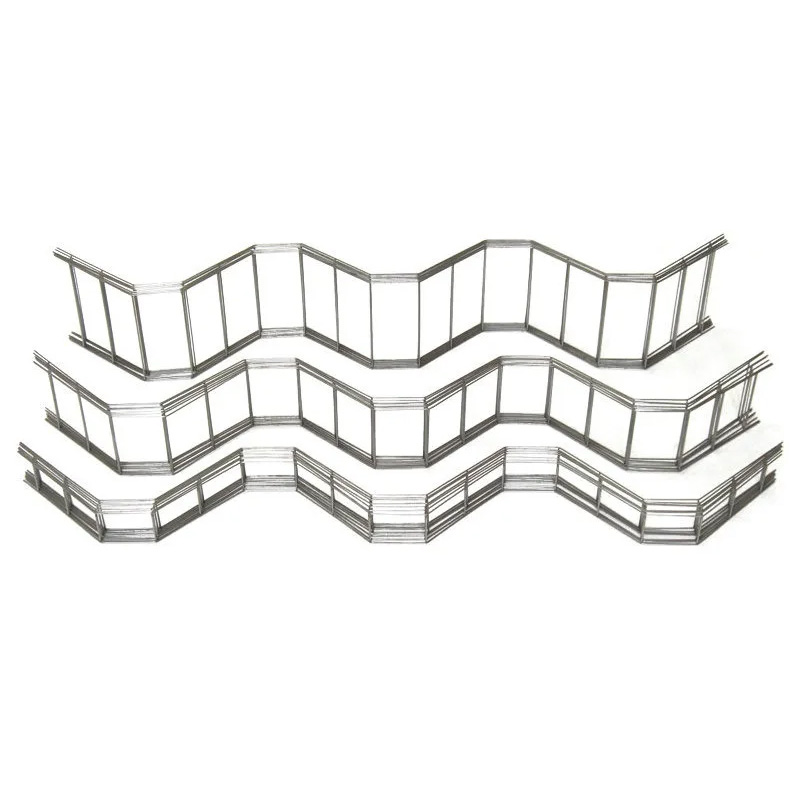
- Mobile Phone
- +8613931874955
- sales@cntcmetal.com
steel frame wall ties
Understanding Steel Frame Wall Ties Importance, Types, and Applications
Steel frame wall ties play an essential role in modern construction, particularly in buildings that incorporate cavity wall systems. These ties are critical components that ensure structural stability, longevity, and safety of buildings, particularly in environments subject to wind loads and seismic activity. This article will delve into the importance, various types, and applications of steel frame wall ties, highlighting their crucial role in contemporary architecture.
The Importance of Wall Ties
Wall ties are used to secure the outer skin of a cavity wall to its inner structural frame, which can be made from steel or other materials. Their primary function is to prevent the outer wall from collapsing or bowing away from the frame, thereby maintaining the integrity of the building. They also help to manage moisture levels within the cavity by facilitating drainage, thus preventing water from being trapped and causing damage over time.
In addition to enhancing stability and managing moisture, wall ties improve thermal efficiency by minimizing air gaps between walls. This is especially crucial in today’s context, where energy efficiency and sustainability are at the forefront of architectural design. Proper installation of wall ties aids in reducing heating and cooling consumption, contributing to lower energy bills and a smaller carbon footprint.
Types of Steel Frame Wall Ties
There are several types of steel frame wall ties, each designed to cater to specific building requirements and conditions
. The most common types include1. Swaged Ties These are formed by rolling a steel wire and then swaging sections of the wire to create a fixed length. Swaged ties are versatile and can be used in various wall applications, providing strong connections.
2. Continuous Ties These are used to connect the inner and outer walls continuously, offering enhanced stability. Continuous ties are particularly useful in taller buildings where the risk of lateral movement is higher.
3. Restraint Ties These ties prevent the outer wall from leaning away from the inner structure. They are crucial in buildings subject to high wind forces, helping to distribute lateral loads effectively throughout the structure.
steel frame wall ties

4. Vertical and Horizontal Ties Depending on the wall configuration, vertical and horizontal ties may be used in combination to strengthen areas of potential weakness. They enhance the overall structural integrity of the building.
5. Expansion Ties In areas subject to thermal movement, expansion ties allow for movement between the wall units without compromising stability. They are designed to accommodate changes in temperature while maintaining structural integrity.
Applications of Steel Frame Wall Ties
Steel frame wall ties are widely used in various building types, including residential, commercial, and industrial structures. Their application spans across several key areas
- High-Rise Buildings In skyscrapers and multi-story buildings, wall ties are invaluable for maintaining structural stability against wind forces and seismic activities. The taller the building, the more critical the role of wall ties becomes.
- Renovations When renovating old buildings, integrating modern wall ties can significantly enhance stability while preserving the aesthetic aspects of the structure. This is particularly essential in areas with historical significance.
- Cavity Walls In buildings designed with cavity walls, wall ties are indispensable for ensuring that the walls remain properly aligned and stable. They also help to regulate moisture, preventing water-related issues.
- Soundproofing Steel frame wall ties can also contribute to soundproofing in multi-family homes or commercial buildings by minimizing vibrations and ensuring solid connections between walls.
Conclusion
In the realm of modern construction, steel frame wall ties are indispensable elements that contribute to the safety, integrity, and efficiency of buildings. By understanding the types and applications of these components, architects, engineers, and construction professionals can make informed decisions that enhance structural performance. As buildings continue to evolve in complexity and design, the role of steel frame wall ties will undoubtedly remain significant, ensuring that our structures can withstand the test of time and environmental challenges.
share:
-
Why Sacrificial Formwork Is Redefining Underground ConstructionNewsJun.06,2025
-
The Structural Dynamics of Modern Concrete: How Snake Spacers Revolutionize Flexible ReinforcementNewsJun.06,2025
-
Snake Spacers Smart-Lock Concrete Reinforcement with Surgical PrecisionNewsJun.06,2025
-
Snake Spacers: Reinforcement Precision for Modern Concrete ProjectsNewsJun.06,2025
-
Snake Spacers Powering Concrete's Structural DNANewsJun.06,2025
-
Slither into Success: Snake Spacers' Precision Bite for Unbreakable ReinforcementNewsJun.06,2025
-
Sacrificial Formwork: Building Stronger, Faster, and Safer StructuresNewsJun.06,2025



















